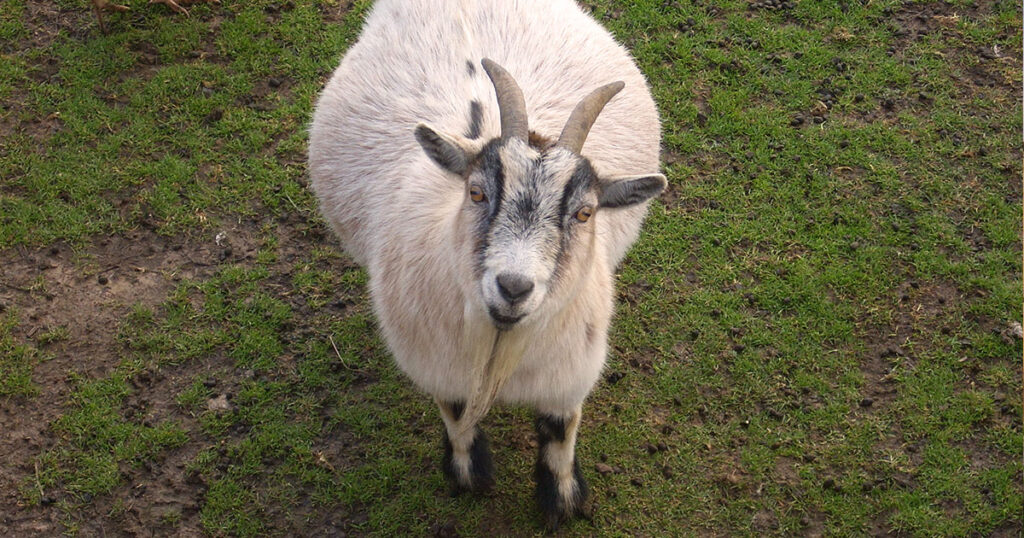
Pregnant is one word in Spanish for people, embarazada, and a different word for animals, preñada. Embarazos occur all during the year, but preñezes are usually seasonal, so the young have an easier time after birth. Winters are a bit colder where I live now than where I used to live on the coast, and this difference in temperatures struck me most when I saw farm animals that seemed to be in the family way. Goats in the fields whose bulging sides made them twice as wide as normal. Mares looking swollen. Even sheep, looking heavier than usual, though with their wool it was hard to tell. Sure enough, though, the weather was still frigid when the neighbors’ sheep began to lamb. Isn’t it early, I asked the owner, a woman in her 70s. She and her husband have a barn and an hórreo and a tiny garden behind a gate across the lane. They keep sheep on the few acres abutting their plot, land that is part of an abandoned building project, now owned by the bank. No one seems to know what will happen with the acres or the buildings themselves, whose empty windows I can see beyond the couple’s barn. For now, the sheep and the dogs that guard them live there. One fewer in the flock after the first sheep to lamb died in the act. Her two lambs did, too, though at first I was unsure about that. “They were beautiful,” said the owner, shaking her head. I wondered if that meant they’d died after birth, but she said no, they were born dead.
I heard all this when inquiring about the truck that had been just pulling out of my lane when I walked in. It was the removal truck for dead animals, and it had come to collect and haul off the ewe and lambs. A moment earlier and I would have seen the crane swing the sheep carcass into the truck. Such a sight would not have disturbed me as much as seeing a hurt animal or an ailing one, a creature at a crossroads, one fork in the path leading back to health and the other leading to further misfortune. With such an animal, the desire is to fix what’s wrong, and the fear is to fail, as if preserving life were a game to win or a puzzle to solve, and the challenge is to steer the creature through the maze of wrong turns to the exit point, the happy finish. Wait—let me rephrase. The happy continuation. No ending at the slaughterhouse seems happy, and the animals I see in corrals or fields are chiefly livestock destined for the table. This is sad, but I don’t worry too much because, after all, no one’s exit point looks like breaking free into fields of happiness.
When I saw the truck, I was just returning from a leisurely run along the river path and into the countryside, full of lone farmhouses and small fields. Here and there, sheep, goats, cows, horses, chickens, geese, and an occasional donkey. It was a cold morning, and in the shadow of trees the ground was still white with frost. But in the sun the grass showed green again. I had stopped to stare at a herd of goats nibbling in the sunny corner of a field. Five there were, all looking very much ready to give birth. While I stood on the path, taking them in, I saw another object move. Shiny, yellow, oblong. What was it? I couldn’t tell at first, but then it raised its head, and I saw that it was a dog wearing a coat. In town it’s not unusual to see a dog bundled up for a turn around the park, but I was very surprised to see a farm dog in a coat. A working dog, I felt sure, would feel the insult of such pampering.
The attitude of the dog as it turned its head toward me was inquiring, not menacing, and definitely not ashamed. A mastín, a mastiff, a huge dog, big and strong enough to protect a flock from predators such as wolves or bears, loyal enough to want to, gentle enough to herd a lost lamb or calf back to its mother, and serene enough to pass its days with the herd. The mastín español is known as a noble breed. The coat, I decided, trying to square the garment with the animal wearing it, was perhaps a royal cape for the lord of the field, protector and commander of the small flock of five. It was true that the dog’s dignity was not compromised. He was in full command. Unless it was a she, just as commanding.
“But whoever heard of a mastín with a coat,” I remarked to my son. Look at the old dog across the way—not one of the two dogs guarding the flock but one whose usefulness is over. He’s stone deaf and a bit stiff. He is chained under the hórreo 23 hours out of 24, and summer and winter he sleeps there, no bed other than the cold hard cement. “Why,” I asked my son, “would a mastín need a winter coat?”
My son shrugged. “Maybe it wasn’t one. Maybe it was a raincoat.”
That almost made sense. The mastín español is also called a mastín leonés, named for the mountain province of Leon where livestock roam great tracts of land. Plenty of cold but not so much rain there as here in Asturias. Perhaps the dog was not used to the Asturian climate. When I checked back, neither dog nor goats were in that field. Spring had come, and the animals had presumably moved on to greener pastures.

